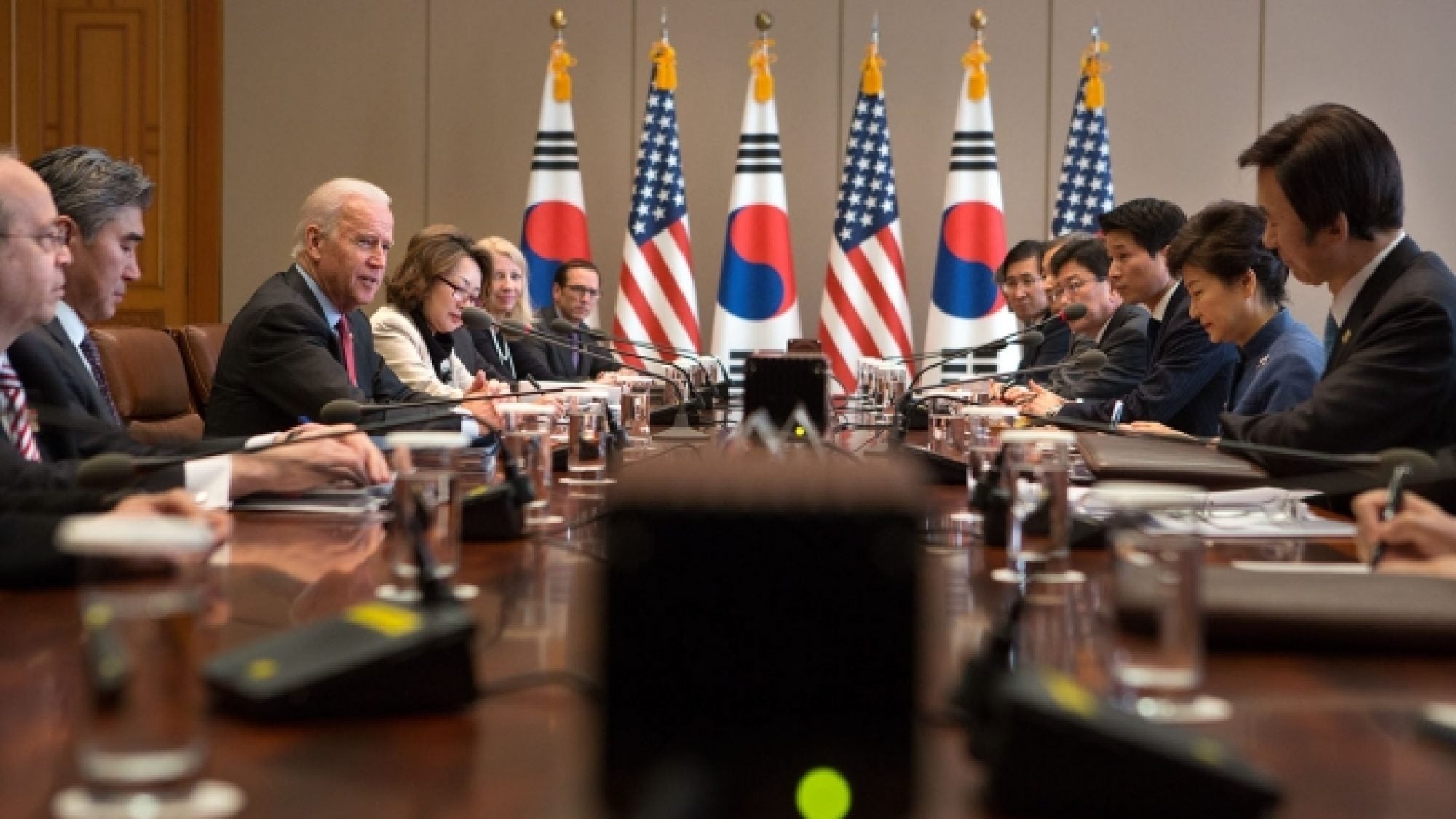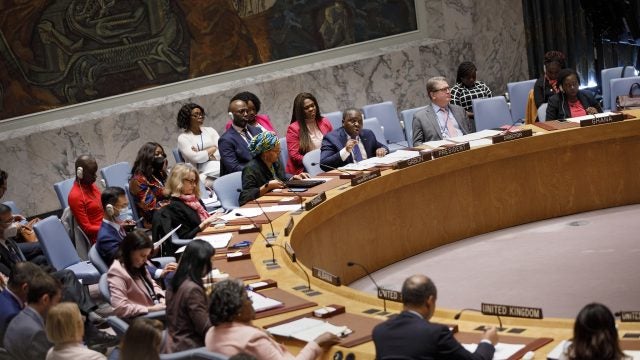
Title: How the United States and South Korea Can Avoid Fatal Diplomatic Missteps on the Korean Peninsula
The Korean Peninsula seems to have calmed down after months of heated tension among all parties involved. Indeed, recent events may suggest that neither Korean state is willing to risk an all-out war that would prove deadly. That both the Republic of Korea (ROK) and the Democratic People’s Republic of Korea (DPRK) held talks at Panmunjŏm last week may augur a starting point from which, according to the Associated Press, “tension is easing.” However, any optimism should be tempered in light of Nortavoih Korea’s well-established track record of avoiding—or outright ignoring—negotiation overtures from South Korea.
As Lt. Col. Roger Cavazos and Peter Hayes of the Nautilus Institute noted, inconsistent approaches by all parties involved may eventually backfire and even derail any chance for reconciliation because they may lead to miscommunication whereby parties involved are “not talking to each other but rather, past each other.” Should miscommunication problems and distrust persist, the consequences for the Korean Peninsula and the regional security environment may be dire. A breakdown in communication, followed by possible limited armed skirmishes, could also provide new impetus and outside pressure to bear on both Koreas.
During a crowd-sourced geostrategic simulation entitled “Korean Conflict Pathways,” a team of analysts at Wikistrat explored what may happen if attempts by the US-ROK alliance to extend an olive branch to Kim Jŏng-ŭn backfire. According to this scenario, Kim Jŏng-ŭn, who is frustrated by what he believes to be inconsistent demands of the US-ROK alliance between offers to negotiate and insulting remarks about his “outrageous demands,” may lash out against the ROK military installation situated along the contested Northern Limit Line (NLL), setting in motion a full-fledged war. Jeong Lee and other analysts who worked on this scenario speculated that in such case, the United States and China might work together with Russia and Japan to bring the two Koreas to the negotiating table because they do not wish to be mired in a deadly regional conflict. Therefore, what may ultimately result is a mutual recognition of sovereignty between two Korean states after a devastating conflict. Simply stated, both Korean states may learn to peacefully coexist. Indeed, the potential outcomes of this simulation may reflect the possibility in which “neither the U.S. nor China is ready to see the strategic landscape in Asia changed in a fundamental way [by the recent Korean crisis].”
The aforementioned simulation scenario also revealed that North Korean threats, such as those most recently seen between March and May this year, are intended as much for internal consumption as they are for extracting concessions from the international community. If miscalculations are to be avoided, one must be always mindful of this factor because Western analyses on the inter-Korean security dynamics still do not factor sufficiently into consideration Kim Jŏng-ŭn’s need to save face and fully consolidate his grip on the Korean People’s Army.
How can the US-ROK alliance and other East Asian countries successfully bring Kim Jŏng-ŭn to the negotiating table? One way of doing this, as argued previously, is to “cajole and flatter the young ruler… [by] allowing Kim Jŏng-ŭn to save face as sovereign ruler of his country.” The US-ROK alliance could help Kim Jŏng-ŭn save face by “accepting his offers to discuss arms reduction first” in addition to holding further talks. That both Koreas have agreed to a “meeting between responsible authorities” this week may be seen as a step towards that direction. Secondly, to prevent a catastrophic regional war, the US-ROK alliance could grant formal diplomatic recognition to the DPRK as a sovereign state.
These diplomatic measures may be crucial in helping the DPRK’s Supreme Leader to save face as he continues to cement his position internally, although they alone may not suffice to prevent potential miscommunications among parties involved. Further, such measures could enable the DPRK to become a responsible member of the international community as it seeks to redirect its focus away from its Sŏn’gun (Military First) policy to economic development.
As ongoing tensions on the Korean peninsula continue to trouble security dynamics in East Asia, preventing miscommunication with Kim Jŏng-ŭn should remain a priority not only for the US-ROK alliance but also for neighboring states. However, should a complete breakdown in communication between Seoul and Pyongyang ultimately occur, a possible solution might be that China and the United States, together with Russia and Japan, jointly apply pressure on both Koreas in order to avoid a destructive regional war.
Image Credit: David Lienemann, Public domain, via Wikimedia Commons
This is an archived article. While every effort is made to conserve hyperlinks and information, GJIA’s archived content sources online content between 2011 – 2019 which may no longer be accessible or correct.
More News

This article explores the uncertain future of Arctic governance amid shifting global geopolitics. It argues that whether Washington and Moscow opt for confrontation or cooperation, multilateralism in the Arctic…

Twenty-five years ago, the United Nations Security Council adopted Resolution 1325, establishing a framework that underpins the Women, Peace, and Security (WPS) Agenda. The Resolution recognized both the…

When we analyze conflicts in the Middle East, we are not analyzing conflicts with isolated impacts but risks for global energy security. Recent conflicts in the Middle East have highlighted…